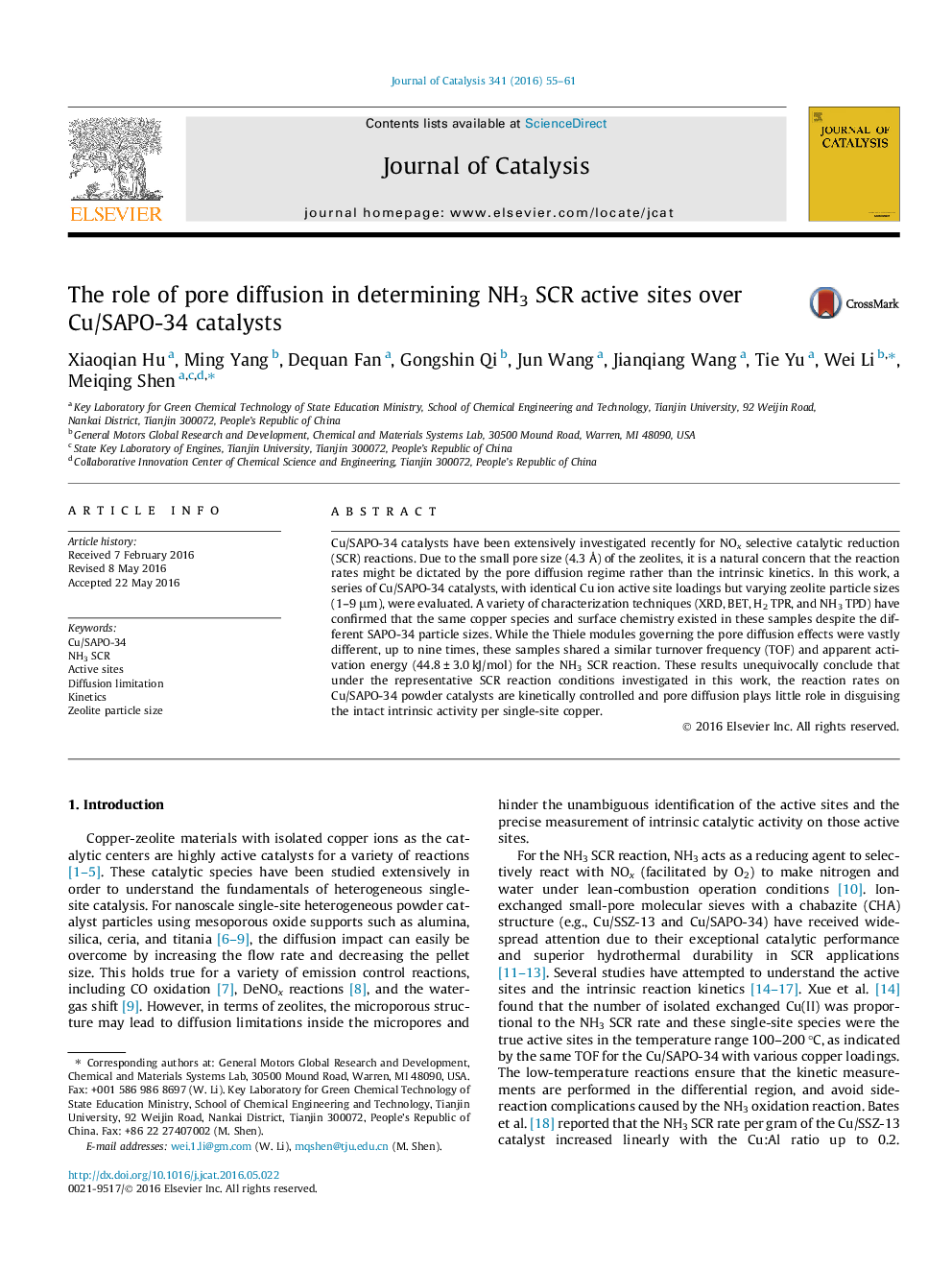| کد مقاله | کد نشریه | سال انتشار | مقاله انگلیسی | نسخه تمام متن |
|---|---|---|---|---|
| 60486 | 47534 | 2016 | 7 صفحه PDF | دانلود رایگان |
• The particle size had no effect on the copper species distribution in Cu/SAPO-34.
• The TOFs of different particle size samples had a constant value for the NH3 SCR reaction.
• The NH3 SCR reaction on Cu/SAPO-34 catalysts was free from diffusion limits.
Cu/SAPO-34 catalysts have been extensively investigated recently for NOx selective catalytic reduction (SCR) reactions. Due to the small pore size (4.3 Å) of the zeolites, it is a natural concern that the reaction rates might be dictated by the pore diffusion regime rather than the intrinsic kinetics. In this work, a series of Cu/SAPO-34 catalysts, with identical Cu ion active site loadings but varying zeolite particle sizes (1–9 μm), were evaluated. A variety of characterization techniques (XRD, BET, H2 TPR, and NH3 TPD) have confirmed that the same copper species and surface chemistry existed in these samples despite the different SAPO-34 particle sizes. While the Thiele modules governing the pore diffusion effects were vastly different, up to nine times, these samples shared a similar turnover frequency (TOF) and apparent activation energy (44.8 ± 3.0 kJ/mol) for the NH3 SCR reaction. These results unequivocally conclude that under the representative SCR reaction conditions investigated in this work, the reaction rates on Cu/SAPO-34 powder catalysts are kinetically controlled and pore diffusion plays little role in disguising the intact intrinsic activity per single-site copper.
Figure optionsDownload high-quality image (89 K)Download as PowerPoint slide
Journal: Journal of Catalysis - Volume 341, September 2016, Pages 55–61
